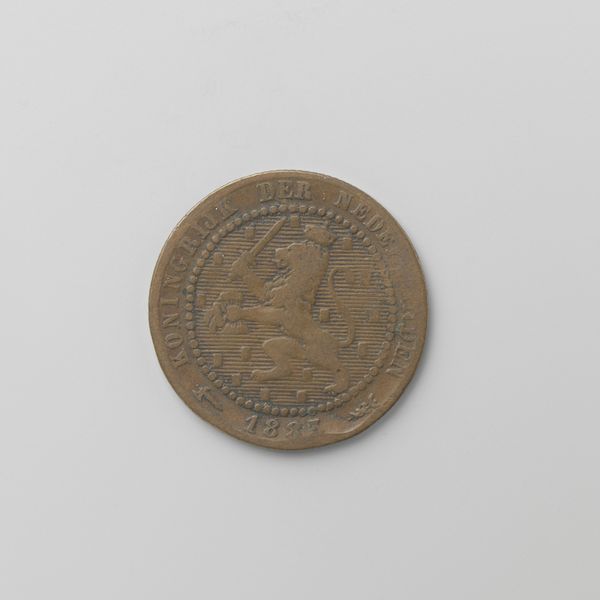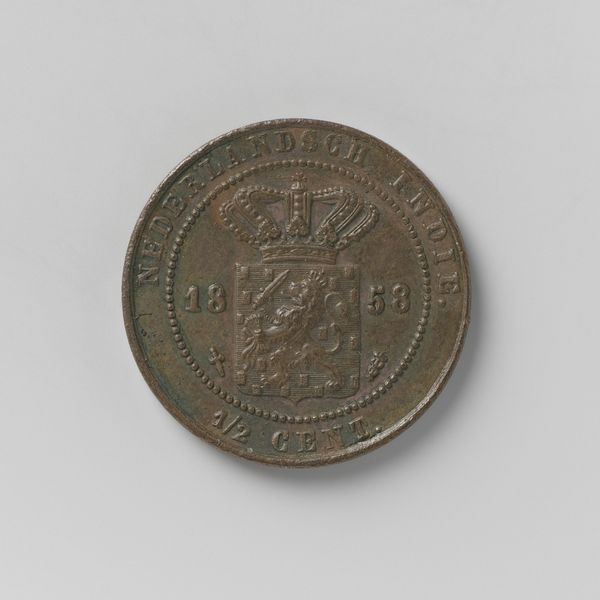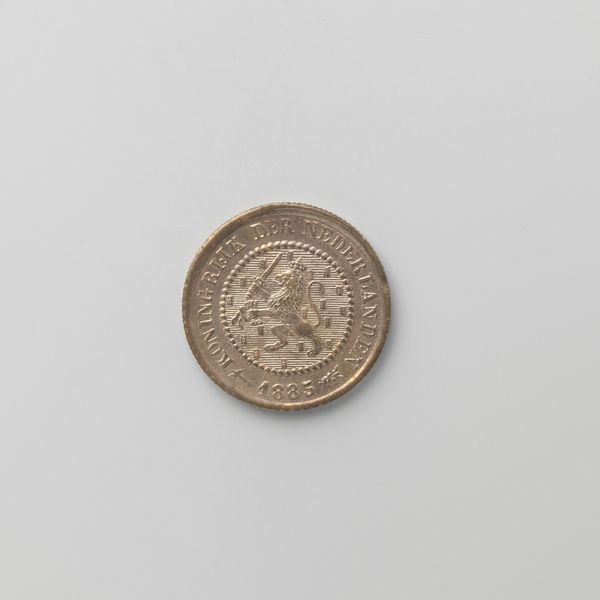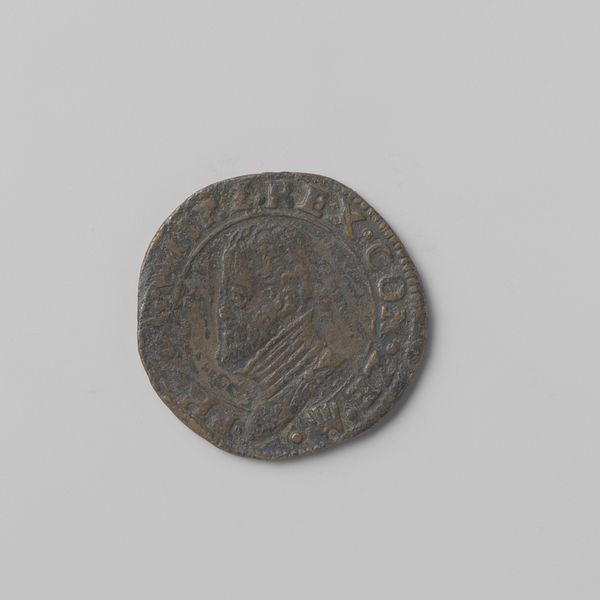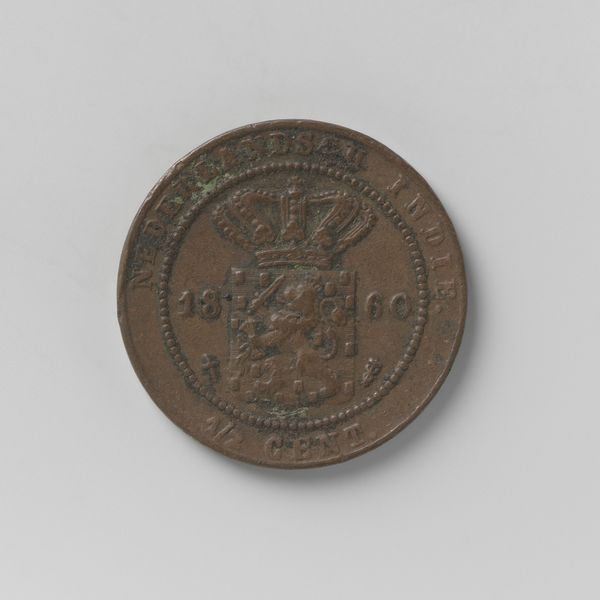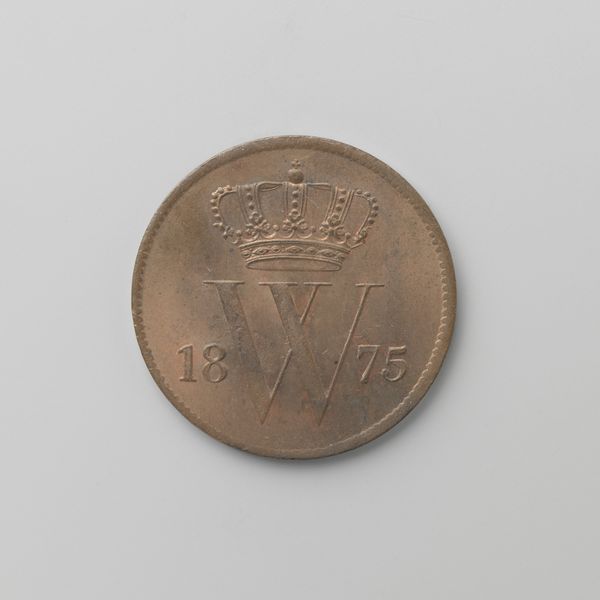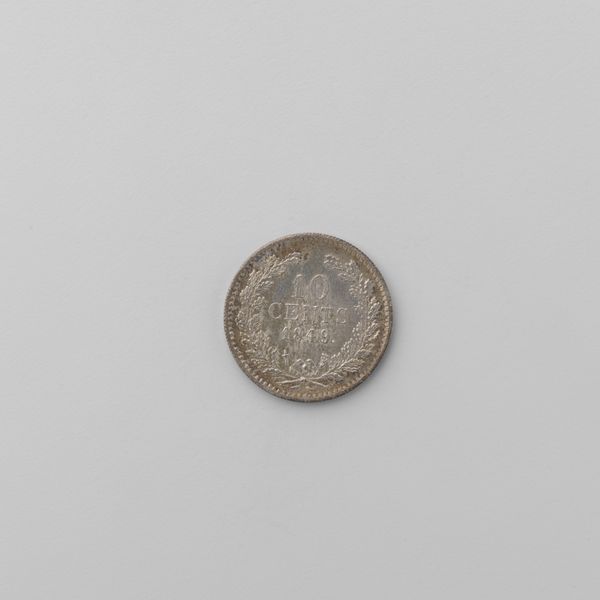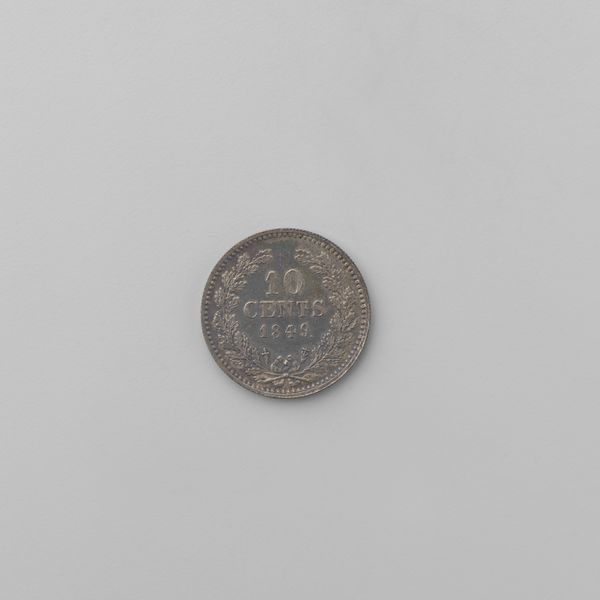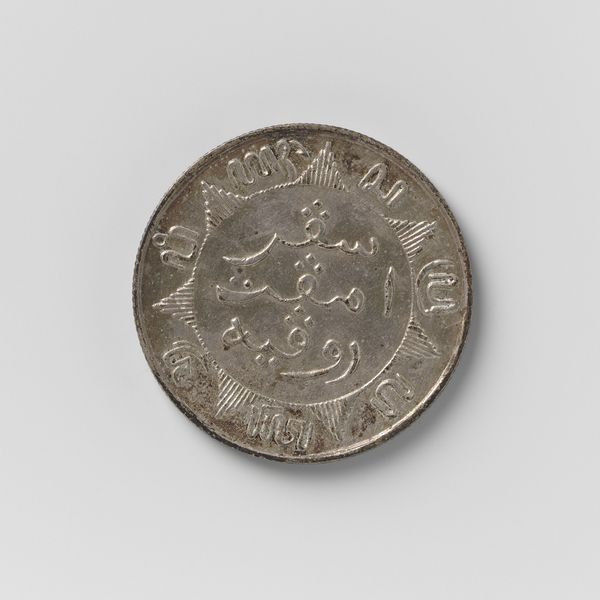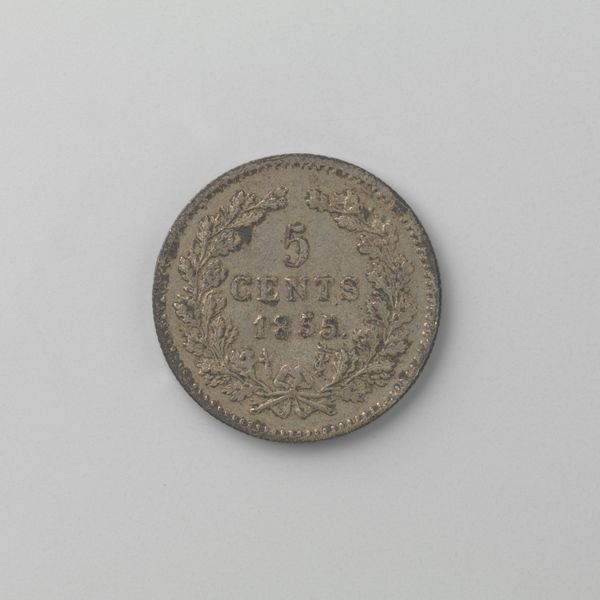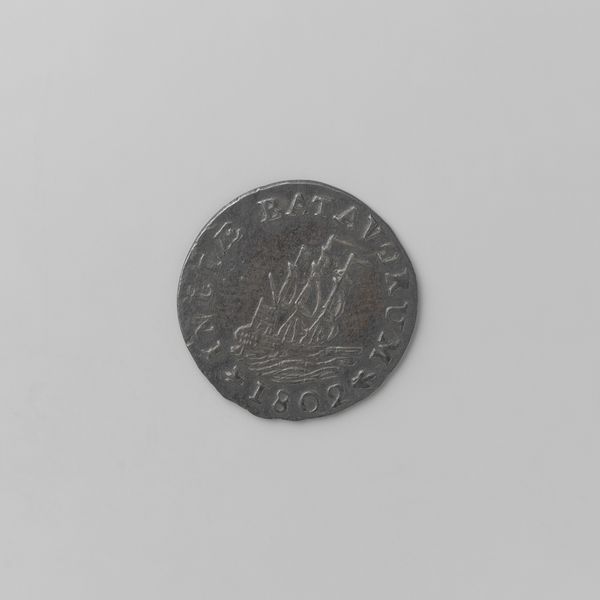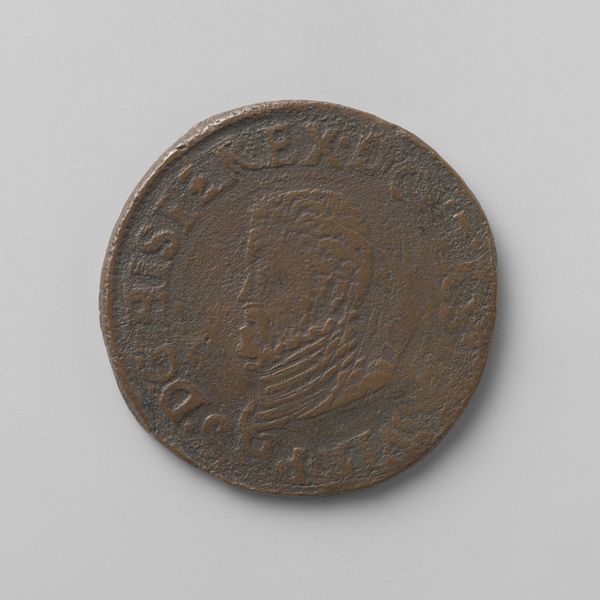
print, metal, relief, engraving
#
portrait
# print
#
metal
#
relief
#
ceramic
#
engraving
Dimensions: diameter 1.4 cm, weight 1.27 gr
Copyright: Rijks Museum: Open Domain
Curator: Here we have a Dutch half-cent coin from 1886, featuring a relief portrait of King Willem III. It’s made of metal, a rather humble piece but deeply connected to everyday life. Editor: My first impression is one of solemn authority, miniaturized. The worn copper surface creates a sense of age and history in your hands. Curator: Indeed. The size is significant, a mere token of currency. Yet consider the distribution. Millions of these entered circulation, each a physical embodiment of state power and Willem III’s profile serving as constant propaganda for Dutch monarchical power. Editor: Semiotically, it's fascinating. The central image, encircled by the inscription "KONING WILLEM III," establishes a clear symbolic order. The visual texture and design speaks to an almost obsessive need for visual control within everyday commerce. Curator: Observe the relief technique, though! Each detail meticulously engraved; this coin is as much a work of art as a tool for economic exchange. We should acknowledge the material too; metal, the feel and touch connects this to an economy rapidly changing via industrial expansion. Editor: Do we agree it's primarily an act of representation for political intent though? The repetitive display on money amplifies ideology into what theorists would call overdetermination— the image of Willem and Dutch Royalty present everywhere in Dutch commercial and social life. Curator: Certainly, political power manifests here. But don't dismiss the artistic craftsmanship. The controlled lines, the subtle curves around Willem's face – this embodies more than sheer utility. I agree though, context is vital, one must know the Dutch Royal lineage to fully see all aspects of symbolism and intention here. Editor: Fair. In the grand scheme, perhaps even this tiny artwork has its role to reveal what shapes a nation. Curator: Exactly. The intimate encounter between an object of daily life and potent representations of authority exposes an interesting and useful way to understand society.
Comments
No comments
Be the first to comment and join the conversation on the ultimate creative platform.
